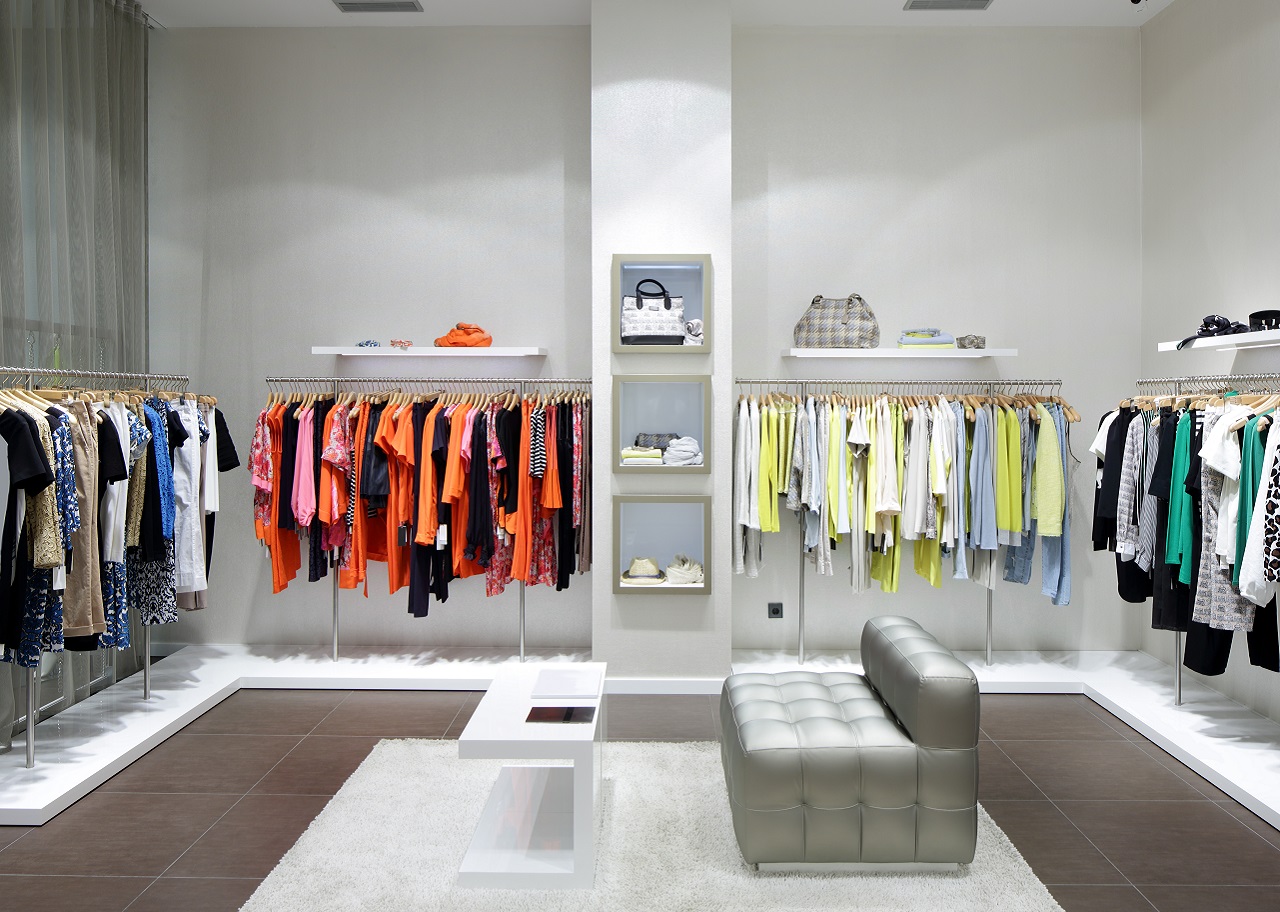Fashion Forward: artificial intelligence as a driver of innovation for the fashion industry
From catwalks to stores, the applications of AI in Fashion Retail at the core of the 2024 edition of NRF Retail's Big Show in New York

Michele Veggian
Domains Delivery Manager
In the misty streets of Los Angeles, in November 2019, a city pulsating with neon lights, humans are about to face a dystopian future with astonishing levels of technological advancement, underlined by the advent of "replicants", androids humans-like but without empathy, considered a threat to the social order.
It is easy to guess the reference: the masterpiece, "Blade Runner," a film that invites viewers to question the nature of intelligence in a breathtaking journey through the mazes of technology and mankind's consciousness.

Although it is set in an almost recent era, its roots delve deeper into history, reaching back to 1982, thirty years after Alan Turing published "Computing Machinery and Intelligence". The Scientist is considered the father of Artificial Intelligence. delved into replicating human thought processes, birthing the now-iconic Turing Test, upon which Ridley Scott's Voight-Kampff Test in the film is predicated.
The discourse surrounding Artificial Intelligence is not novel, yet its evolution has been pushing scholars to imagine cutting-edge scenarios where human potential finds new declinations. What distinguishes this era is the technology that enables the countless applications of AI and is one of the main areas of interest for the scientific community, with research topics such as Machine Learning, natural language processing, and robotics.
The Industrial Revolution of Artificial Intelligence at the disposal Creative Design
Artificial intelligence applications have increased since 1956 (when AI first began to be discussed as a field of research) and today have implications across various sectors of the economy: from transportation to retail, from medicine to engineering.
The fashion industry makes no exception: as the big Fashion Weeks in Milan, Paris, New York, and London closed their doors for this season, designers are already busy getting their runway collections ready for global distribution. With fashion and AI blending so quickly, we might soon see designers use technology to deliver their clothes and accessories at incredible speed, providing customers with a fresh and exciting Purchase Experience.
At the National Retail Federation (NRF) Big Show, the yearly event dedicated to Retail industry innovations, the blending of creativity and artificial intelligence (both Generative and Predictive) was a major focus. Attendees could explore how AI can revolutionize business operations through insightful discussions and interactive workshops, making it evident that AI offers exciting opportunities for retailers to enhance efficiency and drive innovation in the industry.

Generative AI holds wide potential in product innovation, marketing, sales, and enhancing customer experience within the fashion industry and it demonstrates to be particularly accessible and impactful in these areas compared to others in the fashion value chain.
Besides traditional market reports and trends analysis, retailers and designers can now use machine learning algorithms to aggregate and interpret unstructured consumer sentiment data from social media videos. This empowers them to create customized collections and to offer personalized shopping experiences. On the other hand, Predictive AI is already widely applied in replenishment and production scenarios, playing a key role in forecasting demand and optimizing production processes.
Data drive next trends in Fashion Retail: from processes to strategies
The economic impact of artificial intelligence in the apparel, fashion, and luxury sectors is staggering, as projections suggest, could contribute up to $275 billion in additional operating profits. This data announces a shift in industry processes, moving the sector toward new business models. It's essential to recognize that AI isn't just about automation; rather, it's about optimizing and expediting the traditional workflows of fashion companies, ultimately driving efficiency and innovation.
Renowned sportswear brands are leading this revolution by using AI to optimize inventory management and logistics. As a result, they are experiencing operational efficiency improvements and significant reductions in waste throughout their supply chains.
This not only increases operational efficiency but also reduces waste and maximizes sales. At the moment, a significant portion of fashion products remains unsold, with 40 percent sold at discounted prices and 25 percent never sold at all. By leveraging predictive analytics, retailers can enhance profitability while promoting ethical and sustainable fashion practices. Additionally, analyzing large datasets enables retailers to monitor various entities within the value chain, including Planning or Replenishment processes, distribution center stocks (DiBa), inventory levels, order accuracy, and more. This real-time monitoring capability allows prompt intervention in case of systemic crises, ensuring operational resilience and continuity.

It's crucial to acknowledge that in industries like fashion, where emotions and creativity play a significant role, relying solely on data might present limitations. Francesca Muston, Vice President of Fashion at WGSN, a prominent trend forecasting company based in London, highlights this point. She recalls a time when social media indicated a rising trend in yellow. While virtual reactions to vibrant colors are often positive, real-world practicality may differ. For instance, wearing a bright yellow coat throughout winter might not be as feasible as it seems in virtual life. This underscores the importance of experts and professionals in interpreting data collected through advanced technologies like AI. Their insights are essential for generating predictions that reflect the consumers' preferences and aligning them with real-world trends.
Exploring the opportunities of Artificial Intelligence: facing risks with consciusness
AI applications are reshaping both in-store and online customer experiences. During NRF, demonstrations of facial recognition systems and customer behavior analytics showcased how retailers can offer personalized recommendations and adapt the sales environment in real-time to enhance engagement and boost conversions. While these advancements bring exciting opportunities, they also raise points of concern:
- Job role management: Fashion executives are set to prioritize Gen AI this year, with 73% of them intending to do so, while 62% of fashion companies are already incorporating it. Nevertheless, according to McKinsey's report, "The State of Fashion 2024," only 5% of surveyed executives feel fully prepared to leverage technology effectively, potentially leading to a talent shortage. Consequently, there will be increased pressure on team leaders and HR departments to cultivate a culture that encourages the adoption of cutting-edge technologies and tools.
- The risk of lock-in: relying uniquely on monopolistic AI vendors can lead companies into challenging situations. As with any value-added service, it's crucial to have contingency plans ready to mitigate the risk. This involves opening doors to collaborations with multiple players, each specializing in different scopes. This approach ensures flexibility and resilience, reducing dependency on any single vendor and safeguarding against potential disruptions.
- Data privacy and AI ethics: The training of artificial intelligence algorithms often involves the use of "scraped" personal data obtained through web-scraping. Retailers face the challenge of balancing innovation with social responsibility and transparency to ensure the proper management of sensitive data.
Harnessing the power of data to analyze and track information through customized algorithms tailored to the specific needs of individual businesses represents a new approach to achieving business objectives. This is particularly valuable in industries like fashion, where accurate demand forecasting is critical for optimizing production planning and minimizing issues such as excess inventory or unsold goods in stores. By leveraging data-driven insights, businesses can make informed decisions, enhance operational efficiency, and ultimately drive better outcomes in a dynamic market environment.
Specialization at the heart of AI players' positioning strategy

One of the significant takeaways from our experience in New York is the emerging trend of AI players specializing in specific application domains. From voice recognition to B2B and B2C negotiations, from behavioral tracking in both closed and open spaces to holograms interacting with visitors, AI is at the forefront to streamline application usage, automate data collection, and reduce repetitive tasks.
In this landscape, where most players are opting for hyper-specialization within specific scopes to deliver effective and feasible solutions in the short term, the key advantage for companies lies in ease of integration.
Nevertheless, a data-centric culture is fundamental for adopting a responsible approach, a journey that Deda Group has consistently embarked on for several years now. At Deda Stealth we work to ensure an easy platform integration to our customers and we attempt to e achieve this also through a close collaboration with ORS, a Deda Group company specializing in developing proprietary AI algorithms for cross-industry process optimization.
The future of retail may be uncertain, but one aspect is clear: AI will be at its core. Far from being only a trend, AI signifies a fundamental metamorphosis in the retail landscape. It promises to not only transform the way brands operate but also to create new growth opportunities and enhance the shopping experience for consumers.



